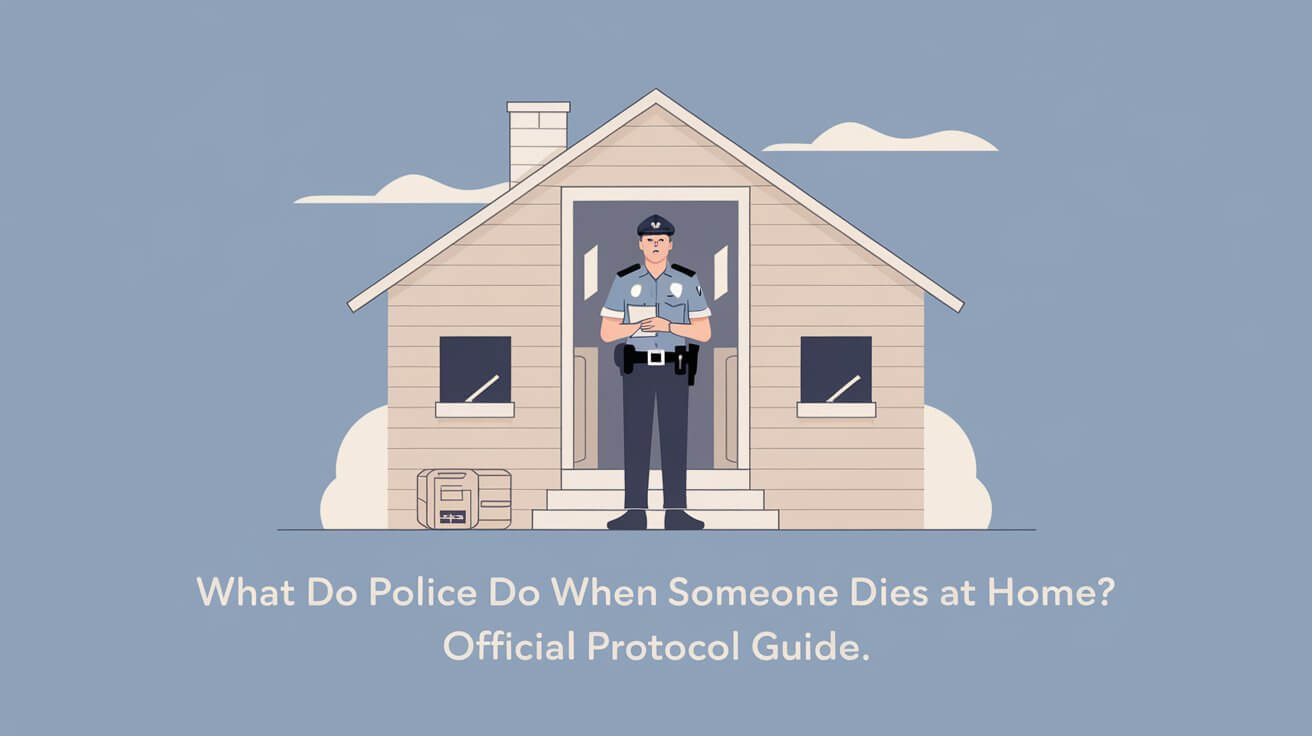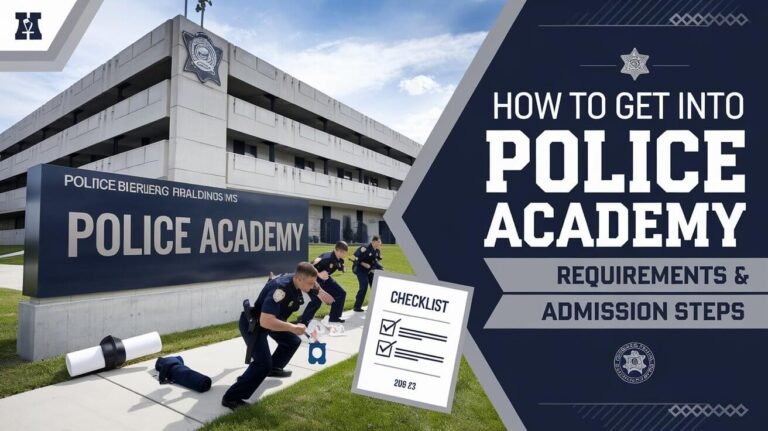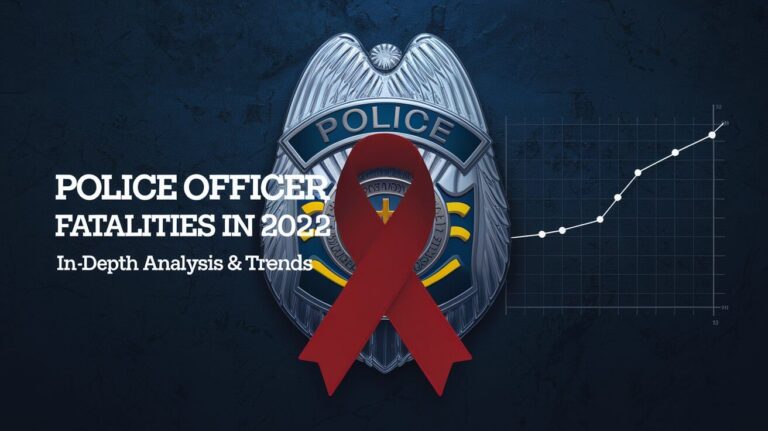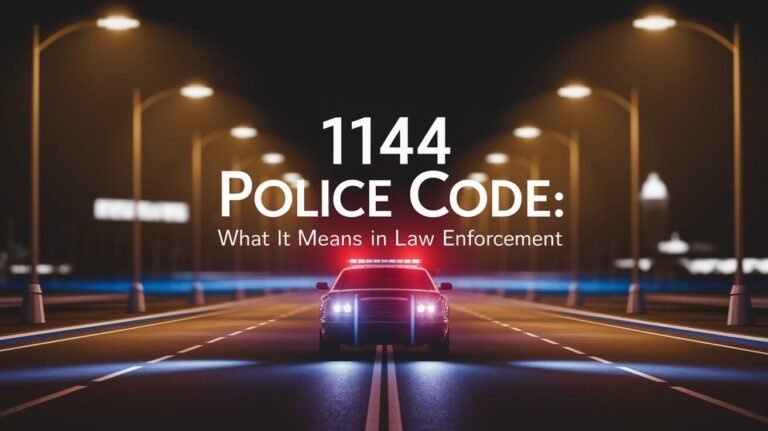What Do Police Do When Someone Dies at Home? Official Protocol Guide

When someone dies at home, police officers serve as first responders who handle the scene with both professionalism and compassion. Their role changes based on whether the death was expected or unexpected. Police ensure the proper handling of the deceased while supporting grieving family members through a difficult time.
Initial Police Response to a Home Death
A police officer’s arrival marks the start of a careful process. Officers first check for signs of life and secure the immediate area. They speak with family members or whoever discovered the body to gather essential information about the deceased person’s health history and circumstances.
First Steps When Officers Arrive
Police look for a pulse and breathing, just as paramedics do. If the person shows no signs of life, officers begin documenting the scene. They note the position of the body, room temperature, and any medical equipment or medications nearby.
Securing the Scene
Even in natural deaths, officers treat the area with care. They ask everyone to step outside the immediate space. This gives officers room to work and helps preserve any evidence if the death turns out to be suspicious.
Immediate Family Communication
Officers speak with family members to learn about the deceased’s medical history. They need to know about:
- Recent doctor visits
- Existing medical conditions
- Current medications
- Any end-of-life care plans
Police Procedures for Expected Home Deaths
Expected deaths typically involve less police intervention. These cases often include elderly individuals or those with terminal illnesses who chose to spend their final days at home.
Handling Natural Deaths
When someone dies from natural causes, police follow a streamlined process:
- Verify any Do Not Resuscitate (DNR) orders
- Contact the person’s doctor
- Coordinate with funeral homes for body transport
- Help family gather important documents
Hospice and End-of-Life Cases
Hospice deaths require minimal police involvement. The hospice nurse usually handles most procedures, including:
- Pronouncing the death
- Contacting the doctor
- Arranging transportation
- Supporting the family
DNR Orders and Medical Documentation
Police check for proper medical paperwork, including:
- DNR orders
- MOLST forms (Medical Orders for Life-Sustaining Treatment)
- Recent medical records
- Prescription lists
Police Protocol for Unexpected Home Deaths
Unexpected deaths trigger a more thorough investigation. Police treat these scenes differently to ensure they don’t miss potential evidence of foul play.
Emergency Response Steps
Officers arriving at an unexpected death:
- Secure the entire house
- Interview all present individuals
- Document the scene with photos
- Collect preliminary evidence
- Contact detectives if needed
Investigation Requirements
Police must investigate thoroughly when deaths appear unusual. They look for:
- Signs of forced entry
- Evidence of struggle
- Unusual marks on the body
- Missing items or disturbed areas
Evidence Collection Process
Officers gather evidence systematically:
- Photograph the entire scene
- Document body position
- Collect relevant items
- Interview witnesses
- Take detailed notes
Documentation and Legal Requirements
Police complete extensive paperwork for home deaths. These documents help determine cause of death and create an official record.
Required Police Reports
Officers file detailed reports including:
- Time of arrival
- Witness statements
- Scene observations
- Medical history
- Actions taken
Death Certificates and Official Forms
Police help initiate the death certificate process by:
- Gathering basic information
- Contacting proper authorities
- Ensuring doctor notification
- Coordinating with funeral homes
Chain of Custody Procedures
Officers maintain strict control over:
- Personal belongings
- Important documents
- Valuable items
- Medical records
Working With Other Authorities
Police coordinate with multiple agencies during home deaths. This ensures proper handling of all aspects of the situation.
Coordination With Medical Examiners
Police work closely with medical examiners when:
- Death seems suspicious
- No doctor will sign the death certificate
- The deceased lived alone
- The death occurred without witnesses
EMT and Paramedic Roles
Emergency medical teams often arrive with police. They:
- Check for signs of life
- Attempt resuscitation if appropriate
- Pronounce death officially
- Share medical observations with police
Funeral Home Arrangements
Officers help coordinate with funeral homes by:
- Securing the scene until arrival
- Providing necessary documentation
- Ensuring proper transportation
- Maintaining dignity of the deceased
Property and Asset Security
Police take steps to protect the deceased’s property and belongings, especially if they lived alone.
Securing the Deceased’s Home
Officers ensure home security by:
- Checking all entry points
- Securing windows and doors
- Noting any damage
- Recording security measures taken
Handling Valuable Items
Police protect valuable items by:
- Creating detailed inventories
- Photographing valuable items
- Securing important documents
- Noting jewelry and cash
Documentation of Personal Effects
Officers carefully record:
- Location of important items
- Condition of the home
- Visible valuables
- Any signs of disturbance
Special Circumstances
Some home deaths require special handling due to unique situations or locations.
Deaths During Home Healthcare
When death occurs during home healthcare:
- Police verify caregiver credentials
- Review care documentation
- Interview healthcare workers
- Check medical equipment
Multiple Occupancy Homes
Deaths in shared homes need extra attention to:
- Protect other residents’ privacy
- Secure shared spaces
- Interview other occupants
- Maintain scene integrity
Remote Location Deaths
Rural or remote deaths present unique challenges:
- Longer response times
- Limited resource access
- Weather considerations
- Transportation difficulties
Common Questions About Police and Home Deaths
Families often have questions about police involvement in home deaths.
Timeline of Police Involvement
Police typically spend 2-4 hours at the scene, depending on circumstances. They stay until:
- The scene is fully documented
- Family receives instructions
- Body transport arrives
- Property is secured
Family Rights and Responsibilities
Families should know their rights to:
- Remain present nearby
- Ask questions
- Receive clear instructions
- Get officer contact information
Next Steps After Police Leave
After police complete their work, families should:
- Contact funeral homes
- Gather documents
- Secure the property
- Follow up on reports
Important Tips for Families
Knowing how to interact with police helps the process run smoothly.
What to Do Before Police Arrive
Families should:
- Leave everything untouched
- Gather medical documents
- Write down important details
- Clear access to the area
Working With Law Enforcement
Effective cooperation includes:
- Answering questions honestly
- Following instructions
- Staying nearby but out of the way
- Taking notes if needed
Following Up After Initial Response
After the initial response, remember to:
- Get copies of reports
- Note officer names and badges
- Keep all documentation
- Follow given instructions
Police handle home deaths with both procedural care and human compassion. Their primary goals include preserving dignity, protecting evidence, supporting families, and ensuring proper documentation. Understanding police procedures helps families navigate this difficult time while cooperating effectively with law enforcement.






